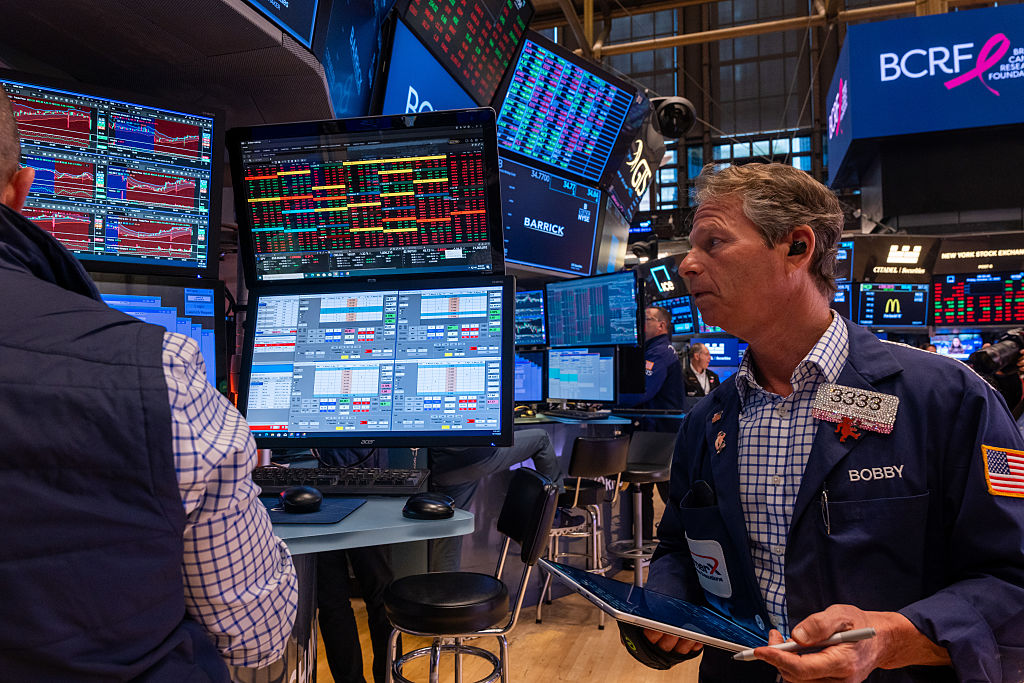Why I’ve sold my gold position
The most important rule of trading is to have a strategy and to stick to it no matter what, says Bengt Saelensminde - and that means also having an exit strategy. And with gold's recent falls, he explains why he has sold out of his gold trade, while remaining bullish on gold's long-term prospects.
On Wednesday we considered the possibility that somebody's been manipulating the gold market.
I discussed some of the less talked about (dare I say, conspiratorial?) reasons why gold took a pasting over the last week or so. It seems some big movers and shakers in the financial world may have it in for old yella.
But it doesn't bother me at all. Ultimately the long-term argument for gold hasn't changed. Gold remains a core holding.
MoneyWeek
Subscribe to MoneyWeek today and get your first six magazine issues absolutely FREE

Sign up to Money Morning
Don't miss the latest investment and personal finances news, market analysis, plus money-saving tips with our free twice-daily newsletter
Don't miss the latest investment and personal finances news, market analysis, plus money-saving tips with our free twice-daily newsletter
What this latest slump has done, though, is shoot a hole in my gold trading strategy. As gold crashed through $1,636, my trailing stop loss of 15% was hit and I was out of the trade. I'll explain the significance of that price in a minute.
Today I want to show you why I stuck to my guns and cashed out of this trade, even though I'm still confident on gold's long-term trajectory.
The most important rule of trading: stick to your strategy
Whether you're trading for short-term gains, or investing for the long term, you must have a strategy. And you need to stick to it!
In mid-June last year I laid out this classic strategy for playing a secular (long-term) bull market in gold: Buy all the way up.
Sounds simple right?
I introduced the idea when gold stood at $1,230. So we bought a tranche at that price and then kept adding every time the price moved up $100. And as I said at the time, this strategy can work whether you're buying gold with a spread-bet, an exchange traded fund (ETF), or even coins.
So that's the buying part of it. But you need a strict exit strategy, too.
I suggested using a 15% trailing stop loss (ie sell when the price of gold falls 15% from its high) for our exit.
And over the year, gold shot up to $1,925 (that's the price based on the December future my spreadbetting company quotes). It then levelled off, before falling off the precipice last week. 15% from the top meant that our stop loss took us out of the trade as gold hit $1,636.
Here's how the strategy played out using a spread-bet. I've included the purchases and the profit/loss on each trade.
| $1,230 | $1,636 | 406 |
| $1,330 | $1,636 | 306 |
| $1,430 | $1,636 | 206 |
| $1,530 | $1,636 | 106 |
| $1,630 | $1,636 | 6 |
| $1,730 | $1,636 | -94 |
| $1,830 | $1,636 | -194 |
| Spread betting profit | 742 |
If you followed this strategy to the letter from the start, you should have made some decent profits on our early positions, and inevitably suffered some losses towards the end.
Overall we made a gain of 742 spread betting points. For simplicity I've not included rollover costs, or costs of finance, which will vary depending on which spread betting company you use. But in reality you wouldn't come away with the full 742 points, multiplied by how much you bet per point. I hope you did well.
As you can see from the table, late-comers (at $1,730 and over) came away with only losses. Sorry if that was you. But I'm absolutely convinced that sticking to the strategy and selling out was/is the right thing to do.
Why you need to think differently as a trader
As it happens, I feel that the gold bull still has a long way to run. There's no way I'm selling out of my long-term strategic holdings. From the outset I had one strategy for my core portfolio accumulate gold ETFs and physical coins.
But then I also had my trading strategy using the spread bet.
Now when it comes to the trading side of things, experience has taught me that I must stick to my trading rules. If not, then trading is nothing more than gambling.
The gold held in my trading account is a completely different investment from that sitting in my bank deposit box. And as such I deal with the two things completely differently. While I've sold down the trading position, I've actually accumulated some more physical gold in my bank safety box!
Here's the point: Though I'm bullish on gold's long-term ascent, I don't have a clue how low gold could go in this downdraught. We could hit $1,400, or maybe even $1,200 for all I know. And if we do, then my trading account could look disastrous.
After all, the pyramiding strategy I used builds the position quickly I've ended up with a large trading' holding. And that's dangerous. That's why it was imperative that I used my strategy to get me out as soon as the position deteriorated.
I always said that this strategy was risky and not for everyone. But it was profitable overall! And it could be again.
I fully expect to get back into this trade. But the timing will have to be right. I need to be happy that gold has put in a firm bottom. And that could be months away who knows?
But if the price continues to fall, I'll be more than happy to recycle the profits I booked from this trade into some more physical metal for my safety deposit box. I want to be in this bull market for the long run.
This article is taken from the free investment email The Right side. Sign up to The Right Side here.
Important Information
Your capital is at risk when you invest in shares - you can lose some or all of your money, so never risk more than you can afford to lose. Always seek personal advice if you are unsure about the suitability of any investment. Past performance and forecasts are not reliable indicators of future results. Commissions, fees and other charges can reduce returns from investments. Profits from share dealing are a form of income and subject to taxation. Tax treatment depends on individual circumstances and may be subject to change in the future. Please note that there will be no follow up to recommendations in The Right Side.
Managing Editor: Frank Hemsley. The Right Side is issued by MoneyWeek Ltd.
MoneyWeek Ltd is authorised and regulated by the Financial Services Authority. FSA No 509798. https://www.fsa.gov.uk/register/home.do
Get the latest financial news, insights and expert analysis from our award-winning MoneyWeek team, to help you understand what really matters when it comes to your finances.
Bengt graduated from Reading University in 1994 and followed up with a master's degree in business economics.
He started stock market investing at the age of 13, and this eventually led to a job in the City of London in 1995. He started on a bond desk at Cantor Fitzgerald and ended up running a desk at stockbroker's Cazenove.
Bengt left the City in 2000 to start up his own import and beauty products business which he still runs today.
-
 Why Trustpilot is a stock to watch for e-commerce exposure
Why Trustpilot is a stock to watch for e-commerce exposureTrustpilot has built a defensible position in one of the most critical areas of the internet: the infrastructure of trust, says Jamie Ward
-
 Tetragon Financial: An investment trust with stellar returns
Tetragon Financial: An investment trust with stellar returnsTetragon Financial has performed very well, but it won't appeal to most investors – there are clear reasons for the huge discount, says Rupert Hargreaves